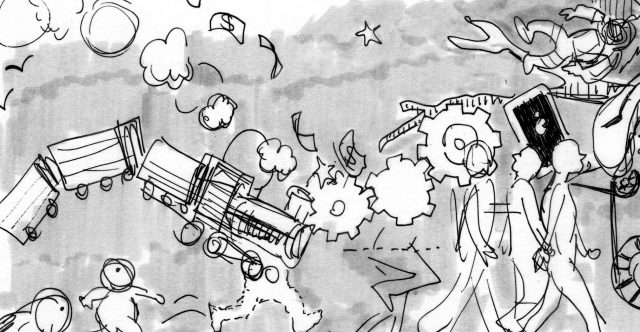Take a moment and think about some of the greatest speakers in the world today. Most of them are entrepreneurs or individuals who are very passionate about what they do. However, is it just that entrepreneurs are born great speakers like they are great in business, or is there something else going on?
The truth is, not many people are great at pubic speaking or storytelling… but it is something that can be improved over time. This is often because, in order to be a decent speaker, you need to know a lot about what you are talking about. On the flip side, if you are really passionate about what you are talking about, and can almost tell it like a storybook, then you might be categorized as a great speaker.
Not only do the best speakers have our attention and make us hang on every word they say, they are also great at deliver their message and making it stick with their audience.
However, there are some things that can make one a better speaker while also being able to portray a message or story in a more meaningful and direct way. We will take a look at some of these methods, which you can start implementing right away.
1 – Visuals Are Extremely Effective
As you can imagine, visuals are going to play a huge role in how well your speaking goes over with an audience. This is often why a presenter or speaker will have slideshows or a powerpoint to help them through their session.
A great way to build engaging presentations is to use PowerPoint Templates. Highly engaging PowerPoint templates can help you add impactful visuals to your presentation giving them the attention they truly deserve.
It’s not just about providing your audience with something nice to look at and keeping them engaged, it’s also about visual learning as well. The video explainer solution, simpleshow, points out that “90% of information transmitted to the brain is visual, and visuals are processed in the brain at 60,000 times the speed of text“.
This might be familiar for anyone who has read a book, and then seen a movie version of that same book. The memory is there from reading the book, but the visuals provided from an actual television show or movie will likely be much stronger.
2 – Know Your Audience and Know Your Message
Just as important as providing visuals to your audience and having something to work off of, is actually knowing what you are going to be talking about. The last thing you want is to be speaking in front of an audience and trying to grasp for the right words, simply because you aren’t sure how to explain or tell your story in detail.
A good example of this would be if someone asked you to summarize a book you read through a few years ago, versus that of your favorite movie. One of these you likely won’t remember at all, but when you start talking about your favorite movie, there will be a lot more detail and enthusiasm.
This is exactly what you want to achieve with your storytelling and pubic speaking as well.
The problem is, sometimes you need to talk about things that you might not be that passionate about. For times like these, you just need to put in the grunt work and study/remember as much as possible, so when it is time to speak you know what needs to be covered and how to deliver it.
3 – Read, Write, Practice… and Repeat
Nothing is easy the first time around. The best speakers in the world weren’t that great when they were just starting out. And just like how you had to study in school and even try to speak a different language, practice makes perfect.
However, with visualization in mind, it’s important to remember again how well the brain absorbs information when it’s in a visual form.
With this in mind, be sure to consider the following to further improve your memory and speaking habits.
- Read as much content as possible and be aware of the words as you are ready
- After reading something of value, write it down and look again at what was written
- When applicable, draw a picture of what you just wrote down
While simple in their form, each of these simple memory tips can help you become a better speaker, while also giving you one more component of visualization to store that information in your brain.
Also, these recommendations are based on your personal preference. If you like reading, then read more often. If you like writing or drawing, be sure to implement those into your teaching and learning practices as well.
The Best Speakers Became The Best Speakers
As mentioned earlier, when you think about the best speakers in the world today it’s not just because they are great at storytelling — but also with resonating and leaving a lasting impression on their audience.
To be a better speaker, you need to take the time to perfect the art of speaking — while also using visuals to your advantage.
Be sure to read through each of the tips and examples laid out above, while implementing visual learning and storytelling into your future speaking and presentation opportunities.

A professional writer with over a decade of incessant writing skills. Her topics of interest and expertise range from health, nutrition and psychology.


